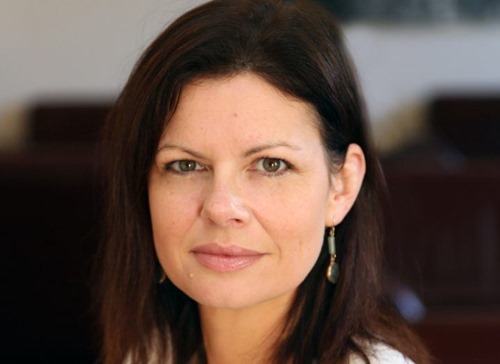Innovation thrives in the right physical environment
/Christine-Loscher-718x523.jpg)
Interview with Christine Loscher, Professor of Immunology at Dublin City University
Professor of Immunology Christine Loscher is the Associate Dean for Research in the Faculty of Science and Health at Dublin City University (DCU). The university, founded in 1975, has 16,000 students and is spread over five locations on Dublin’s north side. The locations currently include a business incubator called DCU Invent (on the main campus), and a business accelerator called DCU Alpha, and they are all within a 2.5-kilometre (1.6 mile) radius of each other. The main campus will soon have a new state-of-the-art science, technology, engineering and mathematics (STEM) facility called Future Tech, which is featured in The Buildings and the Deals. We caught up with Christine to chat about life sciences, real estate and innovation.
You established the DCU COVID-19 Research & Innovation Hub in 2020 – what was that like?
Our mission was to solve practical problems by coordinating the university’s research across a wide spectrum (from business to life sciences to education). We addressed issues such as how to move large classrooms online; how to screen new therapeutics at speed; how to communicate public health measures effectively in a multi-lingual context. All our solutions had to be implementable within six months. The Hub’s work underlines the importance of having multiple disciplines working together (something DCU is particularly good at). It also illustrates that while new research is always needed, the application of existing research has a crucial role too.
You have spoken eloquently about food choices and chronic disease, including juvenile diabetes. What is your current biggest concern?
My greatest concern is obesity. Obesity is serious in its own right of course but it has much wider health implications. The public tends to think of obesity in terms of appearance and of being overweight, but it goes much deeper. When a person is obese, their immune system is compromised, and this can be seen in the COVID statistics. Obesity leads to chronic underlying inflammation and acts as a gateway to other chronic diseases such as Type 2 diabetes. It presents a major challenge to any public health system.
Among all the scientific innovations that have come out of DCU, is there one that you are particularly proud of?
We are very proud of SepTec, a spin-out from our incubator DCU Invent. SepTec developed a new solution for rapid and cost-effective sepsis diagnosis. Sepsis is the body’s immune response to the presence of bacteria in the blood or another infection; when the infection-fighting responses turn on the body, they cause organs to function poorly and abnormally. It is very dangerous and can claim lives within hours. By combining microfluidic engineering with sensor technology, SepTec’s diagnostic device can detect sepsis within 15 minutes.
In terms of driving innovation, how important is cross-discipline cooperation?
Cross-disciplinary cooperation is an essential part of innovation. When experts drawn from different disciplines are working together, they spur innovation much more effectively than any single discipline working on its own.
How can the physical/built environment encourage better innovation among scientists?
To get the most from cross-disciplinary cooperation you need colocation. It is good to let the chemists, the physicists, the engineers, the data scientists and other specialists mingle. Problem solving from the ground up requires more than one discipline, it needs the close interaction of many disciplines. DCU is of a size where close interaction is achievable. Scientists moving between facilities such as wet labs and dry labs bump into each other and exchange ideas. The Research Centre for Data Analytics that is funded by Science Foundation Ireland is a notable example; it is called Insight.
How could the life sciences and real estate sectors work better together?
Architects are really important when you are trying to ramp up innovation. To have the best environment for collaboration you need the right physical setup and architects understand how space works. Having the right space is essential when you are trying to get the most from the mix of government funding, private enterprise and universities (sometimes called the “triple helix”).
If you had unlimited money but limited space (no more than 1,000 square / 10,763 sq ft), what would you build?
I would build a living lab. A living lab is an innovation ecosystem that is centred on the user. It is where the various stages of research and development such as (i) brainstorming (ii) research including literature review, data collection and data analysis (iii) filtering and (iv) forming teams can happen simultaneously. Within living labs, users shape the innovation, whereas in traditional innovation networks or labs, users are observed, and their insights are captured and interpreted by experts. The users give their feedback during the process, not at the end. User engagement is essential because there is no point developing, for example, new sensors if the users refuse to use them, and living labs give us that user-driven insight.
THIS INTERVIEW APPEARED IN THE LIFE SCIENCES REAL ESTATE MAGAZINE, ISSUE 1 (31ST MARCH 2022)
/)


/canvascolor(0xffffffff)/WCID_logo_forest_green_2.jpg)
/canvascolor(0xffffffff)/MemberLogo-43501-149701.jpg)
/canvascolor(0xffffffff)/MemberLogo-43801-157601.jpg)
/canvascolor(0xffffffff)/MemberLogo-5669-6104.jpg)
/canvascolor(0xffffffff)/nanoracks-logo-lockup-squared-black_1.png)
/canvascolor(0xffffffff)/GPNT_logo_RGB_EN_1.png)
/canvascolor(0xffffffff)/logotecnopole_alta_resolucion_1.jpg)
/canvascolor(0xffffffff)/Andorra_RGB_RI-1_1.png)
/canvascolor(0xffffffff)/BizMaker_payoff__grey_1.png)
/canvascolor(0xffffffff)/MemberLogo-56301-60901.jpg)
/canvascolor(0xffffffff)/Logo_Bioindustry_nuovo_1.jpg)
/canvascolor(0xffffffff)/Korea_Innovation_Foundation.png)
/canvascolor(0xffffffff)/Mvalley_1.jpg)
/canvascolor(0xffffffff)/MemberLogo-5658-6090.jpg)
/canvascolor(0xffffffff)/Logo_22.png)
/canvascolor(0xffffffff)/2019_01_21_Korea_Jeju_Science_Park.png)
/canvascolor(0xffffffff)/2017_10_24_Morocco_Technopark_Morocco.JPG)
/canvascolor(0xffffffff)/Svart_kontur_liggande_ssclogo_1.png)
/canvascolor(0xffffffff)/buildings2.png)
/canvascolor(0xffffffff)/Logo_ITP-01_1.jpg)
/canvascolor(0xffffffff)/IMG_6669_1.png)
/canvascolor(0xffffffff)/House_of_BioHealth.png)
/canvascolor(0xffffffff)/STH-Tech_logo_USUEL_RGB_NOIR_vsF_avril_21_1.png)
/canvascolor(0xffffffff)/Yothi_Medical_Innovation_Disctrict.jpg)
/canvascolor(0xffffffff)/MemberLogo-66701-317301.png)
